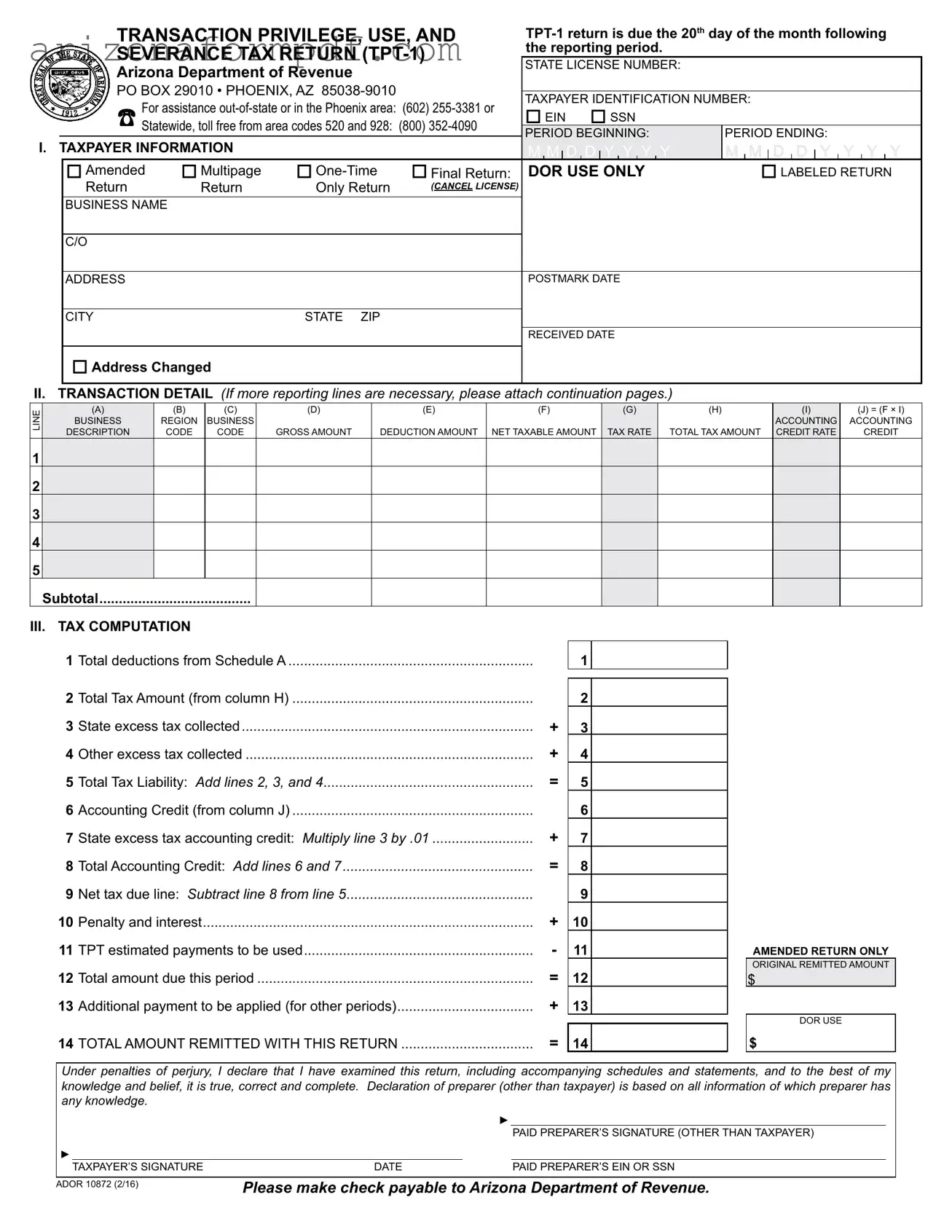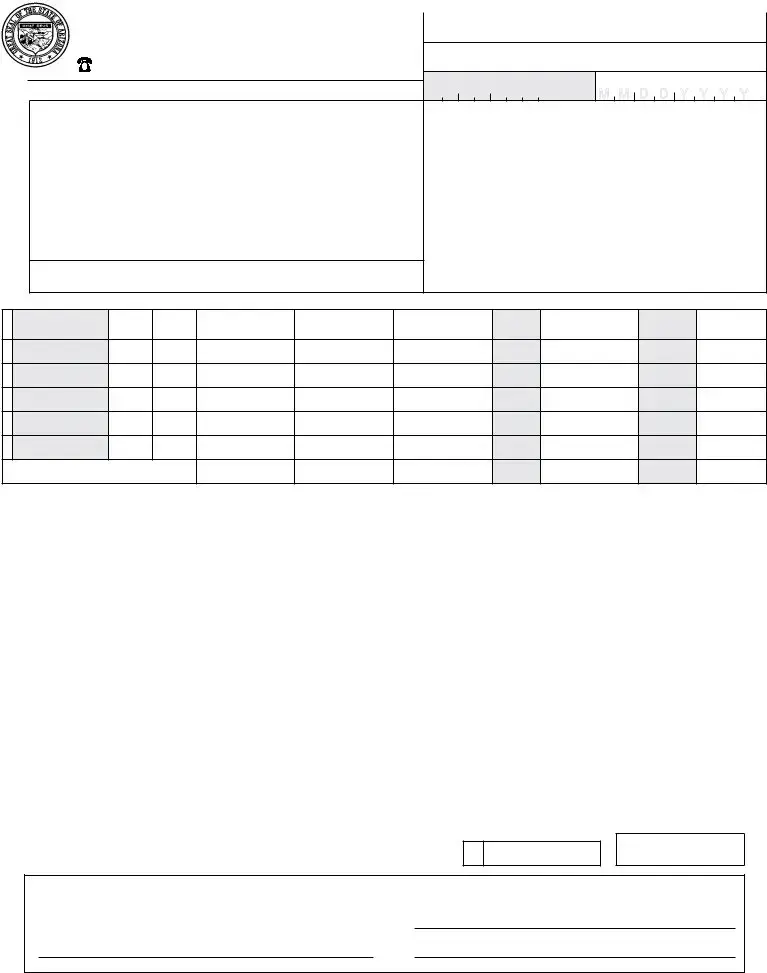What is the Az Tpt 1 form?
The Az Tpt 1 form is a tax return used in Arizona for reporting Transaction Privilege, Use, and Severance Taxes. This form must be submitted to the Arizona Department of Revenue by the 20th day of the month following the reporting period. It is essential for businesses operating in Arizona to ensure compliance with state tax regulations.
Who needs to file the Az Tpt 1 form?
Any business that engages in taxable activities in Arizona must file the Az Tpt 1 form. This includes those who sell goods or services subject to Transaction Privilege Tax. Additionally, businesses that have a severance tax obligation must also complete this form.
What information is required on the Az Tpt 1 form?
The form requires various pieces of information, including the taxpayer's identification number, business name, and address. It also asks for transaction details, such as gross amounts, deductions, and net taxable amounts for each business region and accounting code. Accurate completion of all sections is crucial for proper tax calculation.
What are the consequences of not filing the Az Tpt 1 form on time?
Failure to file the Az Tpt 1 form by the deadline can result in penalties and interest. The amount of these penalties may increase based on the duration of the delay. Timely filing helps avoid additional costs and ensures compliance with Arizona tax laws.
How do I calculate the total tax liability on the Az Tpt 1 form?
Total tax liability is calculated by adding the total tax amounts from the transaction details section, any state excess tax collected, and other excess tax collected. Deductions and credits must then be subtracted to determine the net tax due. Accurate calculations are vital to avoid underpayment or overpayment.
What is Schedule A, and why is it important?
Schedule A is a section of the Az Tpt 1 form where taxpayers must itemize their deduction amounts by category. It is crucial because the total deductions listed on Schedule A must equal the total deductions reported on the main form. Inaccurate or unsubstantiated deductions can lead to disallowance and potential penalties.
Can I amend my Az Tpt 1 form after submission?
Yes, taxpayers can file an amended Az Tpt 1 form if corrections are necessary. The form has an option to indicate that it is an amended return. It is important to clearly state the reasons for the amendment and ensure that all corrections are accurately reflected in the new submission.
Where can I find assistance if I have questions about the Az Tpt 1 form?
For assistance, taxpayers can contact the Arizona Department of Revenue. In-state taxpayers can call (602) 255-3381, while those calling from area codes 520 and 928 can use the toll-free number (800) 352-4090. The department's website also provides resources and additional guidance regarding the form and its requirements.



